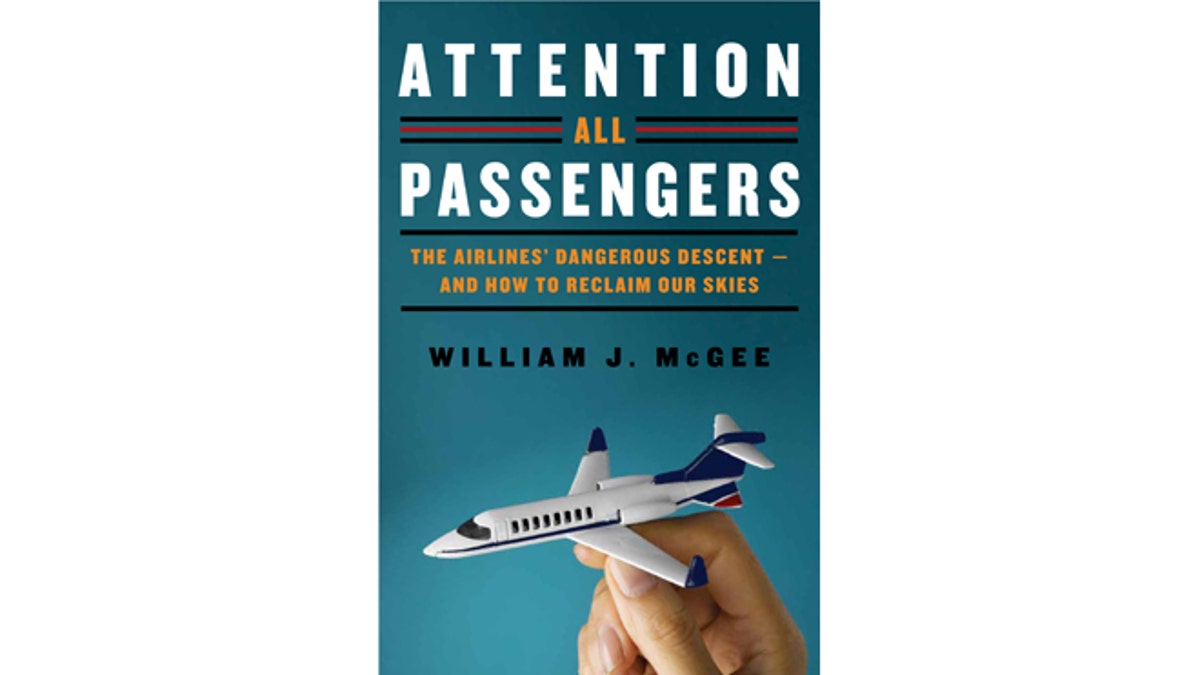
Your plane hasn’t even pushed back from the gate, yet you’ve already removed your shoes and jacket, popped an Ambien, downed a glass of champagne, and snuggled into booties and an eye mask, with your sleeping baby tucked safely in your arms. Sound good? Actually, all these actions could be putting yourself and others in grave danger.
Commercial flying need not be a dire undertaking, and statistically it’s an extremely safe way to travel. So your next flight doesn’t have to be morbid. But common sense and good habits can dramatically increase your margin of safety, because the airlines and the Federal Aviation Administration don’t always tell you all you need to know.
In my new book "Attention All Passengers: The Airlines’ Dangerous Descent—And How to Reclaim Our Skies" (Harper Collins 2012), I devote an entire chapter to surviving airline mishaps and accidents, because we’re seeing more and more “miracles” where everyone walks away from an airline crash. In fact, the National Transportation Safety Board found in 2000 that among all domestic major airline accidents over a 17-year span, 95.7% of occupants survived . So that old “all-or-nothing” attitude is harmful and counter-productive and needs to be jettisoned.
That said, there are certain times when your awareness should be heightened. An exhaustive study by Boeing in 2010 confirmed that overwhelmingly most airline accidents occur during the initial and final stages of flight, since take-offs and landings pose the most statistical risk. Only 11 percent of fatal accidents occur during cruise, which represents the most flight time on many trips, and this segment grows exponentially on longer journeys.
Here are some simple steps to make flying infinitely safer—for you as well as those around you.
• Reconsider booze and meds. Experts assert that alcohol acts as a diuretic and will exacerbate dehydration effects when airborne. But most airlines now double as liquor retailers, so they’re not eager to advise you of the dangers of drinking and flying. If you’re tipsy, woozy, knocked out, or asleep, you’re hardly in a position to secure an oxygen mask, let alone descend an evacuation slide. Staying alert during the early and late stages of flight is critical.
• Dress sensibly. Flip-flops sound great for breezing through security screening—but sandals and spiked heels are the worst possible footwear if you find yourself evacuating a plane after a departure has been aborted in snow, ice, rain, or mud. And natural fibers have proven to be the safest clothes worn by accident survivors, not polyesters and other flammables. No, you don’t need a new wardrobe for your next flight, but consider the outside elements.
• Situational awareness. When my son was no more than four, I made safe egress a game rather than a scare, by having him count the rows of seats to the nearest exit (which I didn’t tell him may be obscured by smoke during an emergency). This also means paying attention to the safety instructions, because even the most frequent flyers are not always familiar with every aircraft type. Also, stay awake. Shut off headsets and iPods at critical phases of flight. And secure loose items.
• Buckling up. Aviation is tremendously complex, but the best advice is amazingly simple: Buckle up. There’s a reason that sign is lit up, and not wearing a seat belt when you’ve been instructed to is the most dangerous behavior of all.
• Restrain babies. As the FAA makes clear on its website, there is no debate over this topic: Under no circumstance is a “lap child” as safe or safer than an infant or toddler properly secured in an approved restraint system.
Since 1953 all airline passengers over the age of 2 are required to be restrained, but the loophole for the most vulnerable passengers has never been closed.
The reasoning behind the FAA’s refusal to heed the NTSB’s advice and ban lap kids is complex, and I address it at length in "Attention All Passengers." But this policy leaves a gaping hole in the safety net.
Thousands of parents and caregivers are unaware of the dangers of not purchasing a separate seat for a child restraint, and educational efforts by the FAA and the airlines have not done enough. If you’re in doubt, go ask a physicist: No mortal can fight g-forces well enough to properly restrain an infant during a crisis in a commercial aircraft. Whatever the cost, an infant seat is the only safe solution.
William J. McGee is author of "Attention All Passengers: The Airlines’ Dangerous Descent—and How to Reclaim Our Skies" (HarperCollins 2012).
